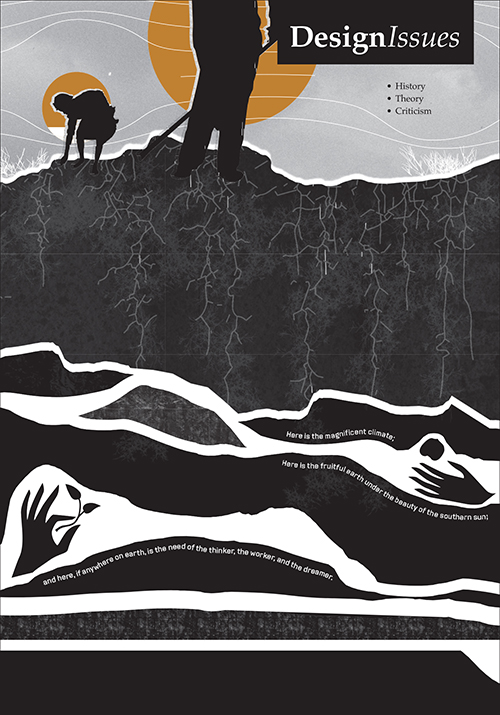-
Dubberly Design Office
2501 Harrison Street, No. 7
San Francisco, CA 94110 -
415 648 9799 phone
415 648 9899 fax
Articles
How Might We Help Designers Understand Systems?
By Hugh Dubberly and Paul Pangaro
Published in She Ji: The Journal of Design, Economics, and Innovation
Volume 9, Issue 2, Summer 2023
Abstract
The Future of Design Education working group on systems outlines the growth of professional practice from a focus on designing artifacts to also include designing systems and designing in the context of systems. They describe a holistic approach to design, one grounded in systems theory and recognition that systems intersect with all aspects of design. They acknowledge that systems are social constructions and can be framed in many ways. They assert that systems exhibit structural and behavioral patterns across instances, and they advocate for the development of models (proxies) that forefront these patterns and make it possible to align views of situations and possible future ways of being with teams and stakeholders under participatory design processes. The working group also notes that systems are never complete and that even small changes may have large effects. This article lists a series of recommendations aimed at design students regarding the knowledge that they should have and the actions that they should take when working around systems, and it provides an overview through which to consider more specific recommendations related to natural, social, and technical systems by other Future of Design Education working groups.
More…Rethinking Design Education
By Meredith Davis and Hugh Dubberly
Published in She Ji: The Journal of Design, Economics, and Innovation
Volume 9, Issue 2, Summer 2023
Abstract
This opening article for the special issue on the Future of Design Education traces paradigmatic shifts in design, from the twentieth-century mass production of artifacts to the twenty-first-century stewardship of evolving product-service ecologies. These shifts argue for a systems approach appropriate to the complex problems brought on by the industrial and information revolutions. Setting the stage for the following topical articles, the authors describe connections among human activities and technologies that are life-centered in their long-term impact on and by humankind. These changes are not simply in the things designers make but in the “why” of design practice under a paradigm that no longer focuses on the production of tangible goods. The article also addresses corresponding shifts in where designers now take action (for example, influencing organizational purpose, governance, infrastructure, and strategy, not just consumer-facing messages, objects, and spaces) and the lengthening of time horizons for evaluating design effects in natural, social, and technical systems. Ten principles for today’s designers offer guideposts for practice and inform a critique of the industrial-era traditions still present in much of contemporary design education.
More…Unimaginable Death: Visualizations of COVID-19 Pandemic Milestones
Paul Kahn, Hugh Dubberly, and Liuhuaying Yang
December 15, 2022
Abstract:
From its emergence in 2019, millions of people have died from COVID.
Representing milestones (1,000 deaths, 100,000 deaths, 1 million deaths) challenges journalists and designers.
Such large numbers are difficult to comprehend, and they are difficult to represent meaningfully.
At the same time, each number was once a living person.
Reconciling the large group while also acknowledging each individual is quite difficult.
Maya Lin achieved such fusion in the Vietnam War memorial.
The AIDs quilt is another example.
Also the Stolpersteine Project in Germany.
COVIC: Collecting Visualizations of COVID-19 to Outline a Space of Possibilities

This article appears in Design Issues, Volume 38, Number 4, Autumn 2022
More…Why we should stop describing design as “problem solving”

This article appears in Geoff Kaplan’s book
“After the Bauhaus, Before the Internet: A History of Graphic Design Pedagogy,”
published this fall by MIT Press.
The book grew out of a conference at Yale in 2019.
A presentation on the same topic was delivered at the conference.
Gui Bonsiepe: Framing Design as Interface

This article appears in Lara Penin’s book
“The Disobedience of Design: Gui Bonsiepe,” a collection of essays about and by Bonsiepe,
published by Bloomsbury, as part of its series:
Radical Thinkers in Design, edited by Clive Dilnot.
The relevance of cybernetics to design and AI systems
Knowledge of cybernetics is increasingly relevant to both what and how designers design.
Cybernetics is the science of feedback, information that travels from a system through its environment and back to the system. A feedback system is said to have a goal, such as maintaining the level of a variable (e.g., water volume, temperature, direction, speed, or blood glucose concentration). Feedback reports the difference between the current state and the goal, and the system acts to correct differences. This process helps ensure stability when disturbances threaten dynamic systems, such as machines, software, organisms, and organizations.
Making sense in the data economy
We perpetually interact with our technologies. On the one hand they serve us, and on the other hand they control us.1 Computers, smartphones, and the infrastructure surrounding them now mediate much of our communications, affecting not only whom we can reach and who can reach us but also what we can say and what we can hear. Our communications tools free our language and our thinking and also govern them. Our technologies affect not only how we “make sense” but also what we mean by “making sense.”
The proliferation of sensors, smart-connected products (Internet of Things), the measurements they generate (big data), on-demand computing (the cloud), and pattern-finding software (AI) are changing how individuals and organizations interact. New distributed structures challenge established centralized organizations. Boundaries between inside and outside are blurring. And everywhere, more and more of what we do is recorded.
As we design with these new technologies, they offer new tools and new materials on which to work, but they also change the design process and the roles designers play in it.
Cybernetics and Design: Conversations for Action
Design Cybernetics: Navigating the New
Thomas Fisher and Christiane M. Herr, Editors, Springer
This is an update (with changes) to an earlier version.
Abstract
Ranulph Glanville came to believe that cybernetics and design are two sides of the same coin. The authors present their understanding of Glanville and the relationships they see between cybernetics and design. They argue that cybernetics is a necessary foundation for 21st century design practice: If design, then systems: Due in part to the rise of computing technology and its role in human communications, the domain of design has expanded from giving form to creating systems that support human interactions; thus, systems literacy becomes a necessary foundation for design. If systems, then cybernetics: Interaction involves goals, feedback, and learning, the science of which is cybernetics. If cybernetics, then second-order cybernetics: Framing wicked problems requires making explicit one’s values and viewpoints, accompanied by the responsibility to justify them with explicit arguments; this incorporates subjectivity and the epistemology of second-order cybernetics. If second-order cybernetics, then conversation: Design grounded in argumentation requires conversations so that participants may understand, agree, and collaborate on effective action – that is, participants in a design conversation learn together in order to act together. The authors see cybernetics as a way of framing both the process of designing and the things being designed – both means and ends – not only design-as-conversation but also design-for-conversation. Second-order cybernetics frames design as conversation, and they explicitly frame “second-order design” as creating possibilities for others to have conversations.
Designing Within Systems
The following is the introduction to Jorge Arango’s 2018 book Living in Information: Responsible Design for Digital Places
Designing has roots in craft — in making “things,” in giving them form. And at one level, designing is concerned with “how things look,” their shape, color, and material. Yet, while “good form” is important, form is not the only concern in designing. Designers are coming to realize that “things” are enmeshed in networks — “gathered together” in systems — biological systems, systems of goods and trade, information systems, social systems, systems of technology, and more. And increasingly, designers are recognizing that we are designing within systems.
More…